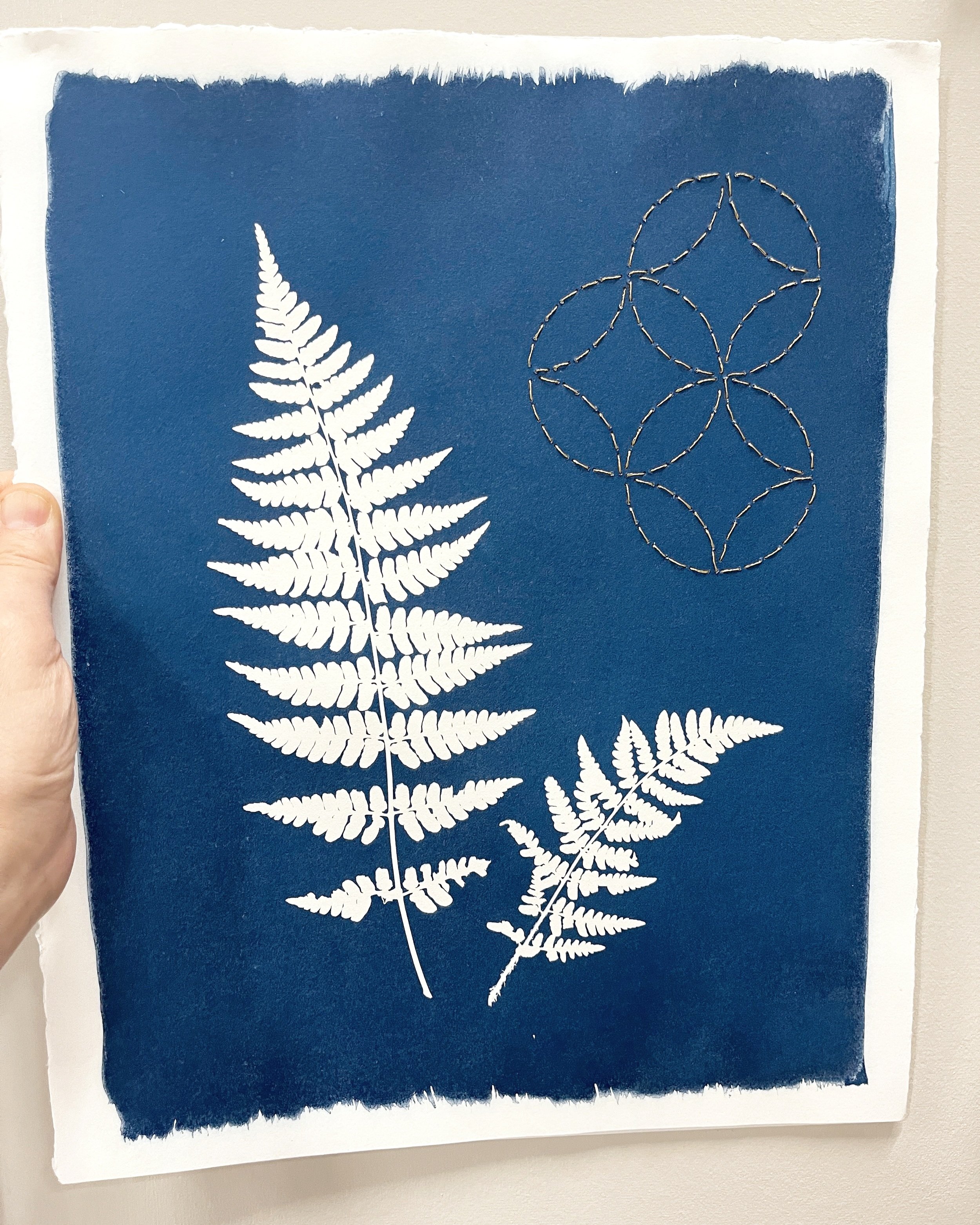Cyanotype Embroidery: A Meditative Practice
I love that embroidery—and needle work of all kinds—is experiencing a revival. For a while, it seemed like needlework was viewed as a kind of silly, frivolous pastime. But now it’s being reframed in such new and interesting ways. There’s the feminist perspective and the craftsman perspective, and a whole host of others, but for me it’s a practice that ties me to my past and to a sort of meditative joy.
The Night Meadow
Like most of us, I don’t have to look back far to find a embroidery tradition in my family. After all, needlework in one form or another has been tied to women’s work for millennia. My mother’s mother was a needlepoint person. I still have some of her pillows and a couple of framed samplers going back to 1934. I wasn’t close to her and she died when I was young, but now I wish I knew more about her history with and interest in embroidery. I can hazard a guess though, since I have several of her mother’s hand sewn quilts.
Shashiko Wildflower
My personal history probably goes back to about age 10 or 11. At that time cross-stitching was all the rage, so my mother and I did a little introductory class together. I took to it right away and loved it. My mother, not so much. She didn’t consider herself ‘handy with the needle’ as she used to say. But I did have a couple of friends up the street who were also into it, and can still remember sharing pattern books and embroidery floss with them. I also remember how exciting it was for us to walk by ourselves, down to the local embroidery shop to purchase new thread. It’s funny because I feel like my memories of childhood are somewhat limited (especially compared to other people), but I can still remember exactly how that shop was laid out.
Fern + Vesica Picis
I usually went straight to the back where all the threads were lined up like a rainbow in neat rows of boxes, and next to it was the wall of pattern books. There was one book in particular that I remember was my favorite. It was all about herbs--parsley and dill, oregano and basil. The design was so sweet and simple—the plant with its name underneath. You could stitch each herb separately and frame it in a small golden frame, or stitch the whole collection as a sampler. I stitched each individually and still remember how pleased I was with my little collection of frames.
Goldenrod and Pampas Grass
It’s been a while since those early cross-stitching days, but lately I’ve taken an interest in meditative mending. I’m not interested in fashion per se, but I love the idea of fixing useful things—like the jeans I wear all the time. I’m also really taken with Japanese Shashiko patterns. So, I’ve decided to combine my interest in stitching with my interest in botanical cyanotypes. Of course, stitching on paper is a whole new experience, with a whole set of new challenges that go along with it, but I still love the process and the calm that comes along with the practice.
My aim is to create a sort of ikebana-type of arrangement when it’s all said and done. A work of art that helps translate that meditative process into a meditative product of sorts, or at least something that invokes a feeling of peace and tranquility.
I’d love to hear what you think? Have you ever tried your hand at embroidery? Do you have a history of needleworkers in your family? I’d love to hear your story. Just let me know in the comments below!




